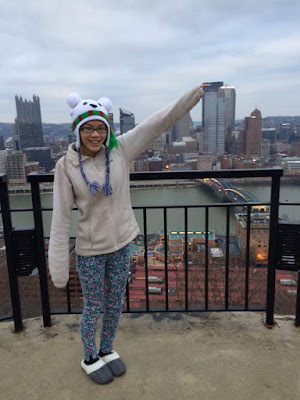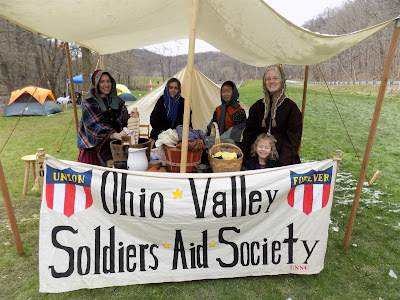"PECOLA: My eyes...I want them blue. I want them blue so people won't turn away from me when I walk down the street. So I can go to school. So my stomach stop growing and my baby be strong. I want them blue so my mama love me and I have friends and they think I'm pretty. I want them blue so people don't do ugly things in front of me and I stop being invisible."
~ The Bluest Eye, adapted by Lydia Diamond
from Toni Morrison's 1970 novel
About the Play
Pecola Breedlove's story is not a happy one. Rather, it is startling and uncomfortable. Pecola's world is intolerant, impoverished, unsympathetic, and unloving. Except for her two classmates, Claudia and Frieda Macteer, with whom she bonds over a love for Mary Jane penny candies, jump rope, and Shirley Temple, eleven-year-old Pecola is alone. Alone in the face of great social injustice and racism, alone to face the horrors of rape and incest, and a victim of poverty and scapegoat to pin society's ugliness upon. Through following Pecola's riveting, heart-wrenching, two-hour journey into madness, we, as the audience, are called to reflect upon our own distorted perceptions of the beautiful and the ugly in our society.
 |
| "PECOLA: My eyes...I want them blue so people don't do ugly things in front of me and I stop being invisible." Source: Point Park University |
"The production, which takes place in post-depression Lorain, Ohio follows the story of the young and unendingly sad Pecola, played by junior acting major Toree Alexandre, who longs for the blue eyes and blonde hair of a white girl. The show allows audiences to have a glimpse at the world through Pecola’s perspective and experience her personal journey in an attempt to relate to the human vulnerabilities we all share.
"'I love the eloquence and poetic nature of Toni Morrison’s words,' Alexandre said in a phone interview Sunday. 'It is a stark example of the ramifications of white oppression. Pecola’s desperate desire to have the blue eyes of a white person…it’s such a tragic story.'"
~ Excerpt from Emily Bennett's article:
"PECOLA: Are my eyes really very nice.
VOICE: Yes. Very nice.
PECOLA: Just 'very nice?'
VOICE: Really, truly very nice?
PECOLA: Really, truly, bluely nice? The truly bluest eye?"
~ Excerpt from The Bluest Eye by Lydia Diamond
 |
| Torée Alexandre as Pecola Breedlove in The Bluest Eye. Photograph source: Point Park University |
At the same time, some of Point Park's finest actors were cast. These include Toree Alexandre as Pecola Breedlove, Kendall Claxton as Claudia MacTeer, Saige Smith as Frieda MacTeer, Amer Jones as Pauline Breedlove, and Perris Drew as Cholly Breedlove, among others.
About the Set
 |
| The flowers looked magical under the stage lighting! Photograph by Point Park University. Source: The Globe |
The fantastic set was designed by Stepanie Mayer-Staley. Though the set itself may appear simple, the details of each piece were carefully designed and built. In fact, the entire back wall was plastered, painted, and fitted with a carved foam addition to achieve that crumbling, 3D textured appearance. A raised and tilted platform transported the audience closer into the heart and soul of Pecola's story.
About the Costumes
Cathleen Crocker-Perry, the head draper and cutter of the Pittsburgh Playhouse, was the costume designer. Though there were only a few costume pieces, her vision, with its soft, earthly palette, befit each character perfectly and breathed life and color into a dark production.
It was a pleasure to have the opportunity to work on alterations for several of the dresses. In the picture below, all three of the dresses that I stitched on appear:
 |
| Photograph source: Point Park University |
Swatches from the two blue dresses that I altered:
Cathleen also designed and built two of the most adorable 1940s dresses for the Macteer sisters:
 |
| Photograph source: Point Park University |
 |
| This pretty, peach-colored print became the cutest 1940s dress with light blue ric-rac and matching buttons! |
Final Words
Without doubt, The Bluest Eye is truly an unforgettable, haunting play that resonates with audiences well after the show's end. And, it was such an honor and privilege to serve on the wardrobe crew for such a production. Many thanks to the talented professionals, cast and fellow crew members.
"CLAUDIA: And so is the how and the edges of the why of it. A little black girl yearns for the blue eyes of a little white girl, and horror of the heart of her yearning is exceeded only by the evil of fulfillment. A little black girl steps over into madness, a madness which protected her from us, simply because in the end it bored us.
"I talk about how I did not plant the seeds too deeply, how it was the fault of the earth, the land, of our town. I even think now that the land of the entire country was hostile to marigolds that year. This soil is bad for certain kinds of flowers. Certain seeds it will not nurture, certain fruit it will not bear, and when the land kills of its own violation, we acquiesce and say the victim had no right to live. We are wrong, of course, but it doesn't matter. It's too late. At least on the edge of my town, among the garbage and the sunflowers of my town, it's much, much, much too late"
~ The Bluest Eye, adapted by Lydia Diamond
Novel by Toni Morrison






































